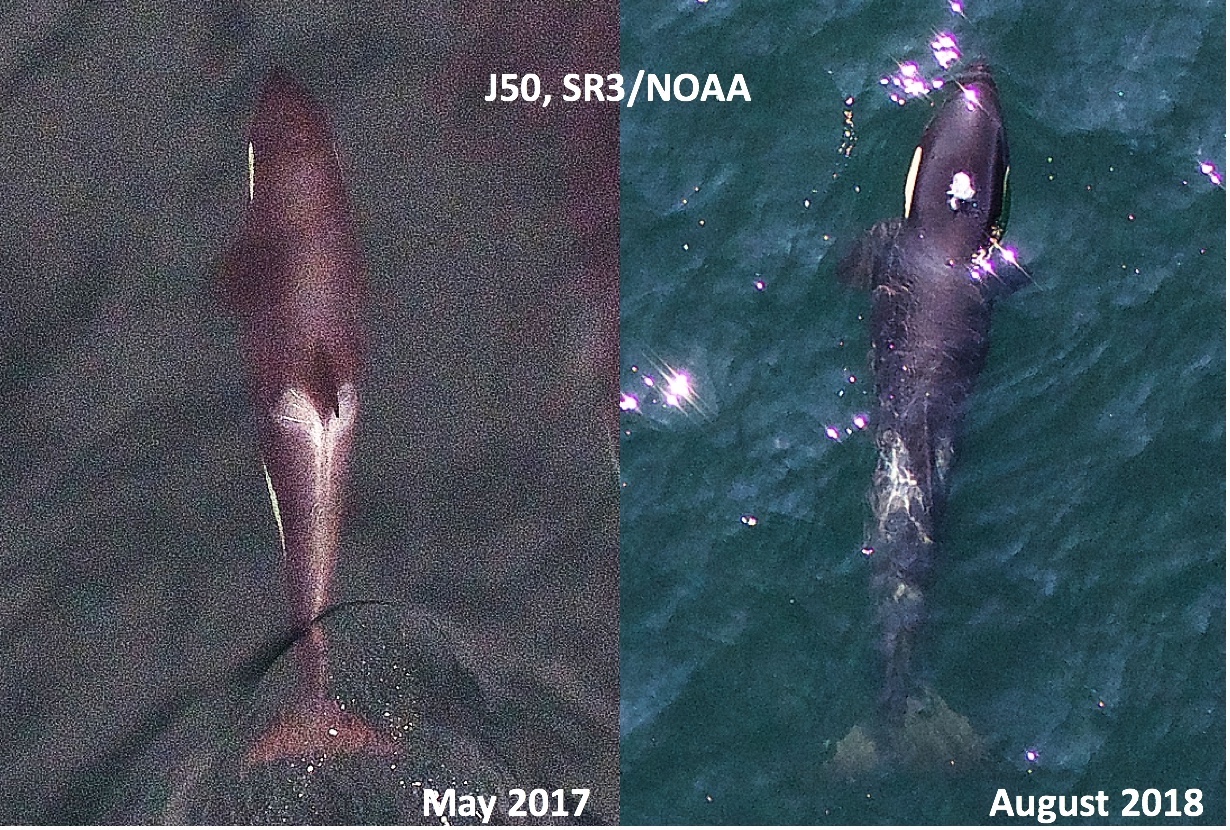3-Year-Old Killer Whale Is Starving, and Biologists Don't Know Why

It's all hands on deck as biologists, fishermen and concerned citizens try to come up with the best plan possible for saving a wild, starving killer whale (Orcinus orca) named Scarlet, or J50, last seen off the coast of Washington state.
The best idea on the table so far is to feed her live salmon — a tactic that's never been tried with a wild orca before. If Scarlet accepts the dished-out fish, biologists will add medication to some of the salmon they're feeding her, reported the National Oceanic and Atmospheric Administration (NOAA). But first, they'll need to find Scarlet and her pod, who haven't been seen since Saturday (Aug. 4).
Scarlet is a 3-year-old female (born December 2014) who is part of the J pod, one of three small groups of orcas within the endangered Southern Resident Killer Whale subpopulation. The members of this population of charismatic cetaceans spend their summers feeding on salmon in the waters around Vancouver, Canada, and northern Washington. [Photos: Drone Reveals Killer Whales]
The J pod also includes J35, or Tahlequah, a female whose calf died a half hour after it was born on July 24. Biologists watched the grieving mother carry her dead calf around for hundreds of miles over a period of at least 10 days.
While observing Tahlequah and the rest of the J pod, scientists noticed that Scarlet was emaciated and lethargic. To see one of the few reproductive-age females in this group in such poor condition may be a bad sign for the struggling population of killer whales, which has declined from 98 individuals in 1995 to just 75 currently, according to NOAA.
NOAA reported that the J pod has not been seen since Saturday (Aug. 4), but observers on boats are keeping their eyes out. "There's been some challenges with the fog, but the crews have been out looking, and [they're] ready and waiting," Michael Milstein, a spokesman for NOAA, told CTV News Vancouver.
In the meantime, fishermen with the Lummi Nation, a Native American tribe in western Washington, have been practicing techniques for capturing salmon, then keeping the fish alive and well enough to entice a wild orca's appetite, The Seattle Times reported. Their plan is to take the freshly caught salmon directly to the orcas and serve them a meal from the deck of their boat, but there's no guarantee it will work.
Sign up for the Live Science daily newsletter now
Get the world’s most fascinating discoveries delivered straight to your inbox.
Another option is to use an extended pole to administer a long-lasting antibiotic to Scarlet, Lynne Barre, a NOAA biologist, told The Seattle Times. However, getting close enough to the whale to deliver the antibiotic safely and effectively could be a challenge, Milstein told CTV News Vancouver.
But before they approve either of these unconventional rescue plans, NOAA biologists want to know more about what ails Scarlet. A breath sample didn't reveal any obvious illness or infection, but NOAA stated that doesn't rule them out. Nonetheless, scientists agree that Scarlet is in poor condition and she may not survive much longer.
Unfortunately, the scientists can't do anything until they find the orcas. Scarlet and the rest of the J pod were last seen in the outer coast areas of northern Washington.
Yesterday (Aug. 7), Washington Gov. Jay Inslee's Southern Resident Killer Whale Recovery and Task Force met for the third time this year regarding the orcas, according to Gov. Inslee's Executive Order 18-02. Representatives from state agencies, tribal and federal government, and private and nonprofit sectors have been charged with preparing recommendations for actions to address the major threats to this declining subpopulation of killer whales.
And you can be sure that when the expert task force was meeting, biologists were on the water, watching for Scarlet and her family to return.
Original article on Live Science.

Kimberly has a bachelor's degree in marine biology from Texas A&M University, a master's degree in biology from Southeastern Louisiana University and a graduate certificate in science communication from the University of California, Santa Cruz. She is a former reference editor for Live Science and Space.com. Her work has appeared in Inside Science, News from Science, the San Jose Mercury and others. Her favorite stories include those about animals and obscurities. A Texas native, Kim now lives in a California redwood forest.









